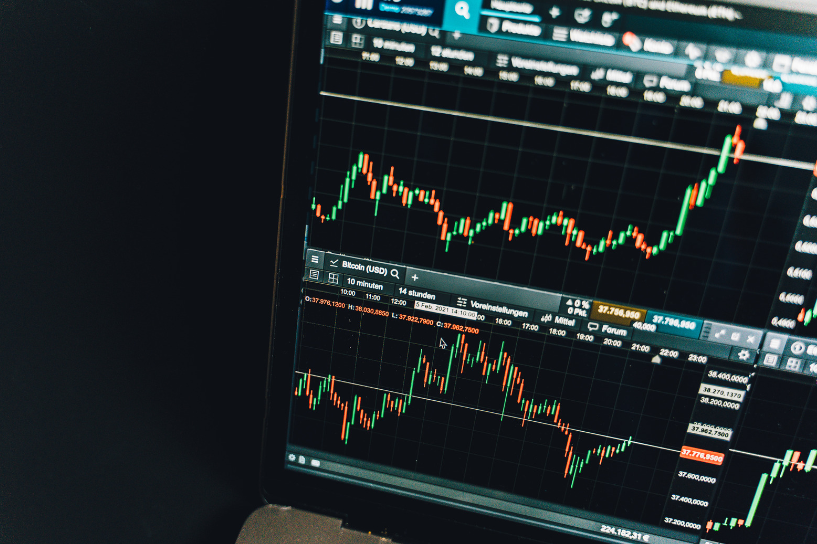
How To Trade US30? It is, also called the Dow Jones Industrial Average (DJIA), is a like a stock market report card. It tracks how 30 big, well-established companies listed on US exchanges are doing. Since the companies with the highest stock prices affect the US30 more, it’s a price-weighted index. The US30 keeps track of these companies’ performance during regular trading hours on the New York Stock Exchange (NYSE), weekdays from 9:30 am to 4:00 pm Eastern Standard Time (EST).
Imagine a giant marketplace for financial products – that’s Wall Street! It isn’t bought and sold directly like a shirt, but through contracts on a platform called the CME Globex. Think of it like a virtual trading floor where you can buy or sell agreements to buy or sell the US30 at a certain price in the future.
US30 in the Context of the US Economy:
The US30, or Dow Jones Industrial Average, is a microcosm of the United State economy. By tracking the performance of 30 large, blue-chip companies listed on US exchanges, the US30 offers a glimpse into the health and sentiment of various sectors that drive the American economy. Understanding how economic data releases and events in the United States can affect the US30 is crucial for informed trading decisions
How To Trade US30: Investing in the US30.
There are two main ways to invest: for the long haul (years or even decades) or for the short term (days or weeks). Here’s a breakdown of each approach:
Long-Term Game:
- Buy and Hold: This strategy is like buying a piece of the pie. You can buy shares of the companies in the itself, or you can buy ETFs that track the index. The idea is to hold onto these investments for a long time, because historically the US stock market has gone up over time.
- Dividend Payouts: Many companies share their profits with investors through dividends. By investing in ETFs that pay dividends, you can earn a steady stream of income.

Short-Term Plays:
- Charting Your Course: This approach involves studying past price movements of the US30 to try to predict where the price might go next. So, it requires some practice and knowledge of technical analysis tools.
- Spreading Your Bets: This is a more complex strategy where you buy and sell contracts tied to the US30 at the same time, but with slightly different prices or expiry dates. It’s best for experienced traders who understand the risks involved.
How Much Money Do You Need to Trade?
Track Performance: Closely monitor the performance of the index itself, alongside relevant economic data that can influence its movement. This will help you make informed trading decisions.
The amount you need to invest in the depends on your goals:
- Long-Term Investor: Looking to buy and hold shares or ETFs for years? You can start small. Some platforms even let you buy fractions of shares for just a few dollars.
- Short-Term Trader: Planning to buy and sell more frequently? You might need more money upfront. This is because:
- Margin: Some trades require a margin deposit, like a security deposit, which can be a percentage of the investment’s value.
- Swings and Roundabouts: The US30’s price can move up and down quickly. Having more money can help absorb these changes.
High Risk: US30 futures trading involves a significant degree of risk. It’s crucial to be aware of the potential for financial loss before entering into any trades. Emphasize that it’s not suitable for all investors, especially those with a low-risk tolerance.

Professional Guidance:
- Seek Independent Advice: Recommend that aspiring traders consult with a qualified financial advisor for personalized guidance tailored to their financial goals and risk tolerance.
- High Liquidity: futures are like really popular stocks that everyone wants to trade. This makes it super easy to buy and sell them because there’s always someone on the other side looking to do the opposite. It’s like a busy marketplace where there’s no trouble finding a buyer or seller.
Considering Future Performance.
- Future Performance: Don’t be fooled by past wins. Just because the US30 has done well before doesn’t mean it will always go up. The market can be bumpy, and prices can jump around a lot.
- Economic Data: Highlight the importance of staying informed about key economic data releases, such as employment figures, interest rates, and inflation reports. These factors can significantly impact the US economy and consequently..
How To Trade US30: Is a Good Fit for Beginners?
The US30 can be a great long-term investment for beginners, but short-term trading might be trickier. Here’s why:
- Long-Term Winner: It has generally gone up over time, making it a good option for a buy-and-hold approach. This lets you own a piece of the US market without the complexities of short-term plays.
- Short-Term Swings: This price can move quickly, up and down. So, short-term trading often involves studying charts and using risk management techniques that beginners might not be familiar with. This can lead to higher chances of losing money.
Beginner-Friendly Options:
- Broader Basket: Consider ETFs that track a wider range of companies, like the S&P 500. These offer diversification, meaning your eggs aren’t all in one basket, and may be less volatile than the trade US30.
- Mutual Fund Mix: Mutual funds are another option for beginners. Professionals manage them, and they already include a variety of investments.
